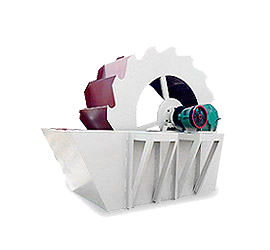Gyratory crushers and ball mills are both industrial equipment used for size reduction, but they serve different purposes and operate on distinct principles. Here’s a breakdown of their key differences:
1. Primary Function
– Gyratory Crusher: Primarily used for coarse crushing (primary crushing stage) in mining and aggregate industries. It breaks large rocks into smaller pieces (~100–250 mm).
– Ball Mill: Used for fine grinding (secondary/tertiary stage) to pulverize materials into very fine powders (~10–300 microns). Common in cement, ceramics, and mineral processing.
2. Working Principle
– Gyratory Crusher:
– Operates via a gyrating mantle inside a concave bowl.
– Material is crushed by compression between the mantle and concave.
– Continuous operation with feed entering from the top and discharge from the bottom.
– Ball Mill:
– A rotating cylindrical shell filled with grinding media (steel balls).
– Material is ground by impact and attrition as balls cascade inside.
– Operates batch-wise or continuously.
3. Crushing/Grinding Mechanism
– Gyratory: Compression crushing (high force applied to break large particles).
– Ball Mill: Impact + attrition grinding (gradual reduction via collisions).
 4. Feed & Product Size
4. Feed & Product Size
– Gyratory:
– Input: Large rocks (~1,500 mm).
– Output: Coarse aggregates (~100–250 mm).
– Ball Mill:
– Input: Pre-crushed material (<25 mm).
– Output: Fine powder (~10–300 µm).
5. Design & Structure
– Gyratory Crusher:
– Tall, vertical design with a conical crushing head.
– Ball Mill:
– Horizontal or slightly inclined rotating cylinder.
6. Applications
– Gyratory Crusher:
– Mining (primary ore crushing).
– Quarries (aggregate production).
– Ball Mill:
– Cement manufacturing.
– Mineral processing (e.g., gold, copper).
– Powder production for ceramics/paints.
 7. Energy Efficiency
7. Energy Efficiency
– Gyratory crushers are more efficient for coarse crushing but consume high power.
– Ball mills are less energy-efficient due to fine grinding requirements.
8. Maintenance & Wear
– Gyratory crushers suffer wear on mantles/concaves.
– Ball





Leave a Reply